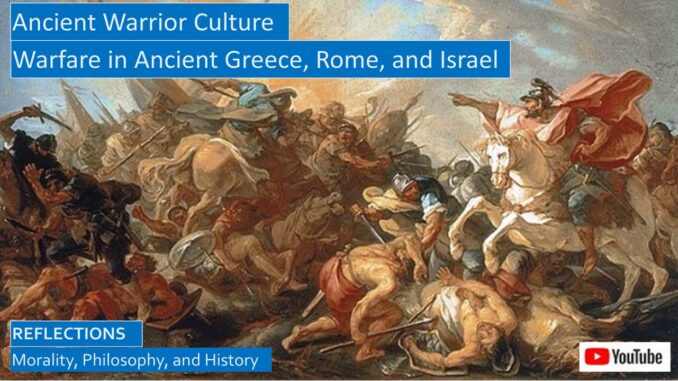
In our first blog, we reflected on how ancient societies were warrior societies out of necessity, how ancients feared that their city-state would be defeated and plundered, that their military age men would be slaughtered, and their women and children enslaved. We also discussed how concubines and slavery were an integral part of a warrior culture.
Ancient Warrior Culture, Blog 1, War, Slaves, and Concubines in Ancient Greece, Rome, and Israel
https://seekingvirtueandwisdom.com/ancient-warrior-societies-blog-1-the-warrior-ethos-of-ancient-greece/
Ancient Warrior Cultures of Ancient Greece, Rome, and Israel
YouTube video for Blog 1: https://youtu.be/7QAZ_s6zw4E
Then we reflected on the ancient Greece and Rome innovations of warfare.
Ancient Warrior Societies, Blog 2, Greek and Roman Armies and Navies
https://seekingvirtueandwisdom.com/ancient-warrior-societies-blog-2-greek-and-roman-armies-and-navies/
Powerpoint Script with Book Links:
https://www.slideshare.net/BruceStrom1/ancient-warfare-in-ancient-greece-rome-and-israel
YouTube video for this blog, and blog 2: https://youtu.be/9xKxqAbJ2qY
YouTube script with more book links: https://www.slideshare.net/BruceStrom1/ancient-warfare-in-ancient-greece-rome-and-israel
WARFARE IN THE OLD TESTAMENT
Warfare is mentioned over three hundred times in the Old Testament, swords four hundred times. Ancient Israel was caught in many of the ancient wars since it was in the cross-roads of trade routes between Mesopotamia and Egypt. Since Judah was mountainous, its armies relied heavily on infantry, but the Bible mentions that King Ahab of the Northern Kingdom had chariots, and that he was felled by arrow probably shot by a composite bow. Assyria and Babylon had cavalry archers on horseback, but not Egypt or Israel. An Israeli chariot had three horses pulling three men, a driver with a spear, an archer, and a shield bearer. We know from our Sunday School stories that King David slew Goliath with a sling, but the ancient slings were not the puny toys we imagine, the sling in the ancient world was a deadly combat weapon. A skilled slinger could sling a rock over 120 miles per hour, faster than the fastest fast ball.
Jerusalem and most ancient cities had walls and fortified towers with a guarded rampart manned by soldiers, ready to rain rocks and arrows and boiling oil on the attackers stuck in the moat. Placing cities under siege was a big part of ancient warfare, these sieges could last six months or more, sometimes a year or two. Pets did not last long in an ancient city under siege. The attackers would try digging under the moat and the walls, the defenders would dig counter tunnels, with smoke, bees, and soldiers fighting in dark tunnels. Assyrians and Romans would sometimes build siege ramps built behind movable towers manned by archers to breach the ramparts above. Or sometimes they would use battering rams to smash through the walls or gates.
We read in Samuel how King David was tempted by Bathsheba bathing on her roof one spring day when he had his general Joab march out with the army in the spring because, as the Old Testament says, spring is when kings march out to war. In the ancient world, in both Greece and Israel, wars were often fought in the spring after the rains had stopped and the crops had been harvested. Spring was when the Ottomans invaded the Balkans, fighting all the way to the walls of Vienna, deep into the Middle Ages.
The Assyrians were particularly cruel warriors. Probably the ten tribes of Israel the Assyrians defeated were lost to history because in many cities the Assyrians followed the ancient common practice of slaughtering the men of the defeated army and enslaving their women and children, totally obliterating all traces of their society. The book “Life in Biblical History” has an interesting comparison of the biblical and Assyrian accounts of the siege of Jerusalem by Sennacherib.
Although the Psalms mention the cruelty of the forced march of the exiled Jews to Babylon, once they reached their destination the Babylonians allowed the Jews to settle their men, women and children in their separate communities, and allowed them to worship Yahweh in the traditions of their fathers. Although we cannot say for sure that no Jews were enslaved, we get the impression in Ezekiel that the Jewish community was left relatively undisturbed, and they were able to reach a level of prosperity that enabled them to sponsor synagogues and rabbis that wrote down the moral laws and traditions and the ancient stories of their forefathers. When Cyrus the Great conquered Babylonia, he allowed those Jews who wished to return to their homeland, but many Jews chose to stay behind in Babylon. Whereas before Jews were the descendants of those who fled Pharaoh to the Promised Land, now the Jews were understood to be those who lived by the commands of the Torah, now both written and oral.[1]
The book “Life in Biblical Israel” devotes many interesting pages on how Jerusalem and other fortunate ancient cities were able to dig down behind the walls until they hit the water table or an aquifer to ensure a pure water supply during a siege, which could last six months or more. Jerusalem was fortunate to have the spring of Gihon under the city, in the wet season there was plenty of water, and even in the dry season the spring’s cave could fill three times a day.[2]
DID JOSHUA REALLY MASSACRE THE INHABITANTS OF THE PROMISED LAND?
We puzzle how a Loving God can instruct the Jews to massacre the pagans of Palestine in the Book of Joshua. The answer to this puzzle is the God of Joshua is an ancient God who leads his chosen people into battle against the despicable foe, the God of Joshua is the God whom Miriam worships in her song, when she sings of the God who throws horse and rider into the sea after the Jews cross over the parted Red Sea.
This famous song is considered one of the most ancient psalms in the Bible by many scholars.
This Song of the Sea in Exodus sings of our warrior God:
I will sing to the Lord, for he has triumphed gloriously;
horse and rider he has thrown into the sea.
The Lord is my strength and my might,
and he has become my salvation;
this is my God, and I will praise him,
my father’s God, and I will exalt him.
The Lord is a warrior;
the Lord is his name.
Pharaoh’s chariots and his army he cast into the sea;
his picked officers were sunk in the Red Sea.
The floods covered them;
they went down into the depths like a stone.[3]
St Augustine, in his work, On Christian Doctrine, teaches us that when reading the Old Testament stories, we should interpret allegorically those stories that do not appear to describe a properly moral lesson, and do not appear to support the two-fold Love of God and love of neighbor.[4] For instance, when the Lord commands Israel to massacre all the inhabitants of the towns of the idolaters in the Promised Land in Joshua, we should interpret this as a command to root out all the sins in our lives.
St Augustine: On Christian Teaching, aka On Christian Doctrine, How To Read Scripture
http://www.seekingvirtueandwisdom.com/st-augustine-on-christian-teaching-how-to-read-scripture/
https://youtu.be/uQCnAJMPoos
This view is seconded by the findings of modern archeologists, they have found almost no weapons in the ruins of the early ancient Hebrew cities in the period after the Exodus. There were few walled towns, many settled in towns away from the coasts, away from the cities where they were not safe, and settled as farmers and herders in the hills north of Jerusalem where they scratched out a living as subsistence farmers.[5] Archeologists have not found layers of burnt destruction in the archeological layers of many of the cities in the Middle East around the time of the Exodus, the evidence is more mixed. Some scholars postulate that the stories of gradual settlement in the Book of Judges describe more accurately the settlement of the Promised Land.
Professor Amy-Jill Levine of the Teaching Company, in her lecture on the Conquest, argues that the evidence on widespread destruction is mixed, you do see some layers of destruction, these could be from the Exodus, or they could be from the normal intra-city conflicts in the ancient world. Likewise, she argues that a close reading of the text in the Book of Joshua is mixed, not all cities were totally obliterated as a quick reading would lead you to believe. We encourage you to listen to her Old Testament lectures, they are fascinating, but listen carefully, she packs as much as she can in these lectures.[6]
The Torah, the stories of the Patriarchs and the Exodus, like the Iliad and the Odyssey, were originally stories sung by bards in an oral tradition, perhaps sung for centuries before they were put to writing. The war stories in the Book of Joshua fulfill a deep need in a warrior society for a caring God who protects his chosen people, a warrior God who accompanies His people into battle, like the Lord who animated the whirlwind and whose glory shown in the Tent of the Tabernacle during the Exodus to the Promised Land.
What would it be like to listen to these ancient stories told by our ancestors by the light of an ancient campfire? The technical term for this is form criticism. These stories were sung in an uncertain ancient world where you never knew if this would be the year an enemy army would invade and slaughter and enslave all the inhabitants of the land. These stories were to give God’s people hope in uncertain times that their Mighty God would care for them and protect them from their enemies and their foes, and would grant His people victory when they faced these formidable foes.
DISCUSSING THE SOURCES
Reflecting on the Iliad and Odyssey is essential if you wish to understand Greek history and philosophy, and IMHO, the Old Testament as well.
Furthermore, since the Greco-Persian Wars and Peloponnesian Wars are also important in understanding Greek culture, we recommend reflecting on the histories by the Greek historians Herodotus, Thucydides, Xenophon, and the Roman historian Plutarch.
In particular, several of the main Platonic dialogues draw from the Thirty Tyrants installed in power and overthrown soon after the endo of the Peloponnesian Wars.
Thirty Tyrants Ruling Athens After Spartan Victory in the Peloponnesian Wars
https://seekingvirtueandwisdom.com/thirty-tyrants-ruling-athens-after-spartan-victory-in-the-peloponnesian-wars/
https://youtu.be/rrcwdHyvIEg
Xenophon also wrote his adventures in the Anabasis, the Persian Expedition, and also the biography of Cyrus the Great, both of which inspired Alexander the Great to conquer Persia a generation later.
We discuss the Greek and Roman historians in depth in our Book Reviews on Greek History and Philosophy.
Book and Lecture Reviews of Ancient Greek History and Philosophy
http://www.seekingvirtueandwisdom.com/book-and-lecture-reviews-of-ancient-greek-history-and-philosophy/
https://youtu.be/472aVKkPsk8
[1] Phillip King and Lawrence Stager, “Life in Biblical Israel” (Louisville, Westminster John Knox Press, 2001), pp. 223-258.
[2] King and Stager, Life in Biblical Israel, pp. 210-223.
[3] https://www.biblegateway.com/passage/?search=exodus+15&version=NRSVCE
[4] http://www.seekingvirtueandwisdom.com/category/st-augustine-on-christian-doctrine/
[5] Victor Matthews and Don Benjamin, “Social World of Ancient Israel, 1250-587 BCE” (Grand Rapids: Baker Academic, 1993), pp. 3-5.
[6] Amy-Jill Levine, The Old Testament, lectures recorded by The Great Courses, (www.thegreatcourses.com, 2001), Lecture 12, The “Conquest”

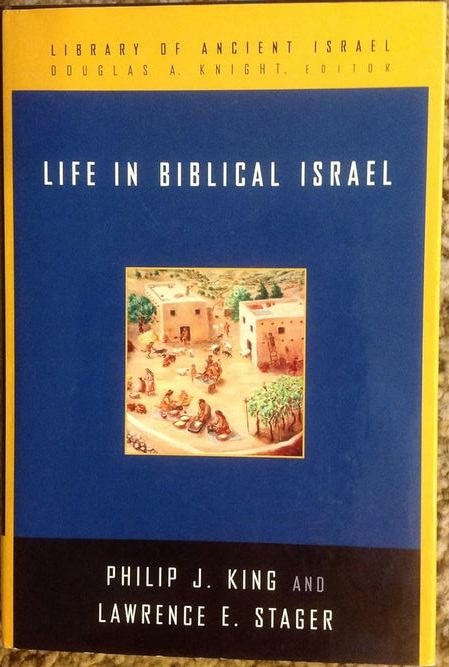
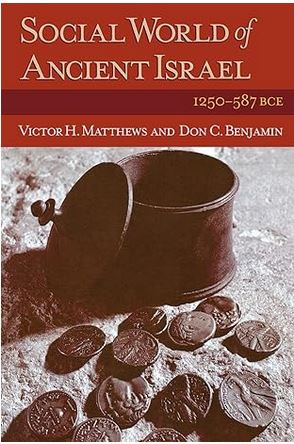
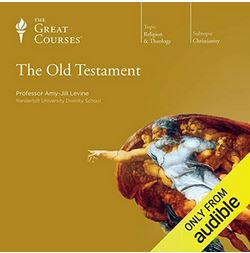
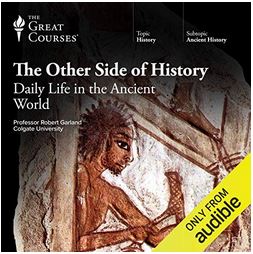
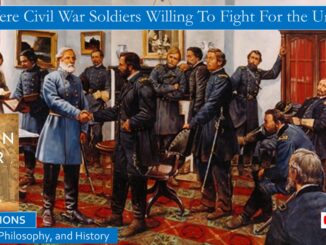

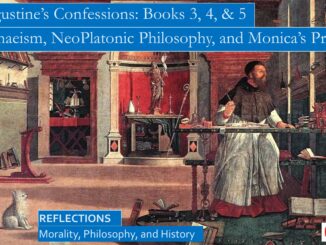
7 Trackbacks / Pingbacks